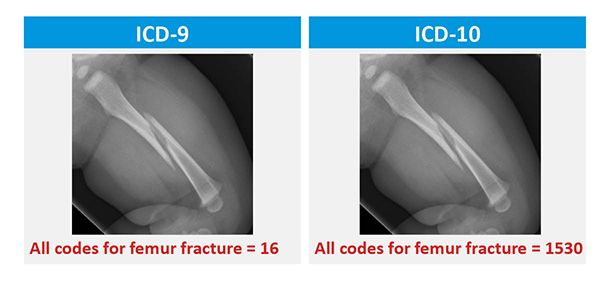
The US Department of Health and Human Services and the Centers for Medicare & Medicaid Services have recently announced some changes in healthcare policy, and at Cincinnati Children’s, we’ve been preparing for them for nearly two years. Today the government mandated that medical practices in the US begin using the 10th version of the International Statistical Classification of Diseases and Related Health Problems code set.
How does this affect you and your child?
You must first understand that this group of codes, more commonly referred to as ICD-10, is an important tool to help the government understand the health of the population. Medical practices have used the ICD-9 codes for decades, so the upgrade is a big deal. The biggest difference between ICD-9 and ICD-10 is the massive increase in the number of codes. This is most notable when we are asked to think of bone injuries. For example, according to the United States Centers for Medicare & Medicaid Services, there are 1,530 ICD-10 codes for a broken femur (the long bone of the leg) compared to only 16 ICD-9 codes.
Most of our preparation for the switch to ICD-10 has occurred behind the scenes. However, in the Radiology Department, we have made several changes that not only improve the care we provide your child, but also allow us to better use ICD-10 codes. For example, we know that the more information we have about your child’s injury, the more likely it is that can identify any problem that might exist. In order to make sure we always have this information, we ask you and your child several questions about the injury (What happened? When did it happen? Where does it hurt?). The radiologists and coders both use this information. The radiologists use the information to better understand your child’s injury and all of the potential problems that the injury may have caused. The coders use this information to assign a more complete ICD-10 code.
Another change has helped the radiologists to speak the same language. There are many different ways that a broken bone can be described. In the past, radiologists would each describe the broken bone in their own way. While the doctors in the Emergency Department or Orthopedic Surgery understood whether or not the bone was broken, there were sometimes questions about the severity of the break. As part of our preparation for ICD-10, the radiologists worked with Orthopedic Surgery to come up with a dictionary of terms for broken bones. While it sounds obvious, we understand each other better now that we are all speaking the same language.
We have been preparing for the change to ICD-10 for a long time. Even though these preparations have been a lot of work, we have used the change to ICD-10 as an opportunity to improve the care we provide for you and your child.